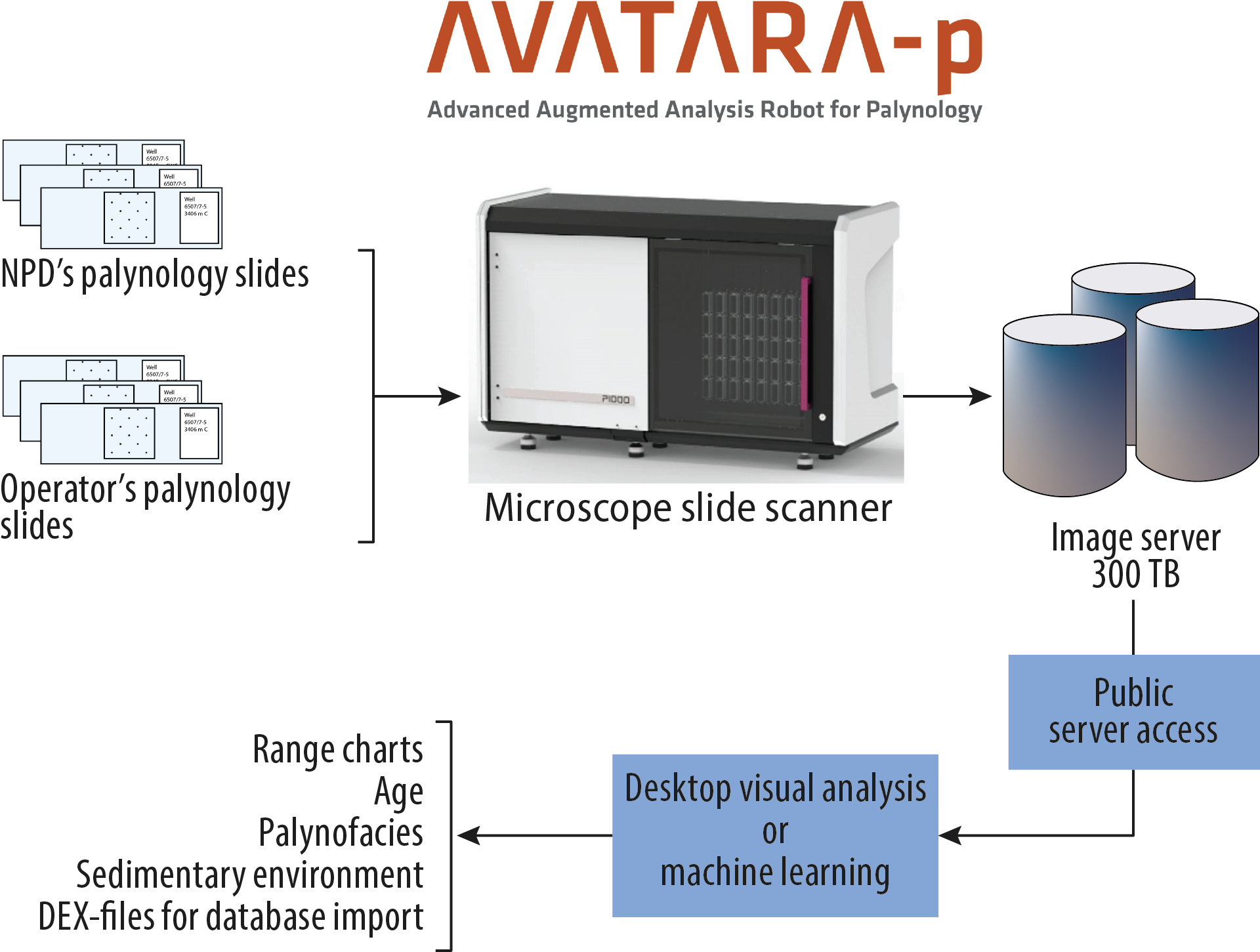Fact box 5.3 - AVATARA-p – advanced augmented analysis robot for palynology
Operators and consultant laboratories routinely produce palynology slides from core and drill-cutting samples (figure 5.5) for age-dating and correlation of exploration and development wells.
The branch of geology which includes palynology is called biostratigraphy, and biostratigraphers are employed in the petroleum industry to age-date and correlate sediments based on their fossil content.
The NPD currently houses 120 000 palynological slides in its Geobank, which will soon increase to more than 200 000. This collection of biopolymer residues preserves crucial elements of Norway’s geological history in the form of fossil pollen, spores and microplankton from the last 400 million years.
The archive is a fundamental dataset which has been shared with companies and academia for over 40 years to improve the industry’s understanding of the subsurface. That supports improved age interpretation and palaeoenvironmental analysis as the science advances. Both the industry and the nation gain from effective access to palynology slides because biostratigraphic analysis reduces the economic risk of exploration.
At the 14th European Congress on Digital Pathology in Helsinki during 2018, the NPD acquired insight into impressive technological advances in imaging and AI-aided medical diagnosis. Palynologists can now reap the benefits of 20 years of pathology-driven research and development. This has resulted in optical resolution finer than 0.29 microns, digital resolution greater than 20 gigapixels, seamless image stitching and focal plane stacking.
Through the Avatara project, the NPD is applying technical advances in digital pathology to geological fields grounded in traditional microscopy. Powerful client servers stream digital slides to the user’s desktops in an optical resolution typical of high-end light microscopes.
Large 4K or 8K screens give the user an immersive experience which provides more visual information than the narrow fields of view in regular microscopy. The user may annotate specimens for improving taxonomic consensus and discussion between workgroups.
In addition, the user interface can export these annotations to generate training sets for ML applications. The pathologist’s tools for improving diagnoses through interprofessional communication and decision-making are now available for biostratigraphers through Avatara-p.

Figure 5.5 Microfossils. Palynological slide of pollen and spores.

Figure 5.6 NPD scanner for palynological slides